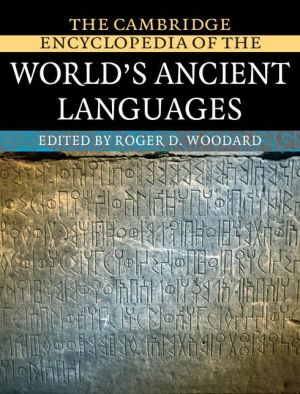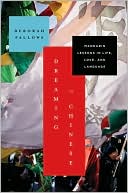Cambridge Encyclopedia of the World's Ancient Languages
CHOICE Outstanding Academic Title of 2006 The Cambridge Encyclopedia of the World's Ancient Languages is the first comprehensive reference work treating all of the languages of antiquity. Clear and systematic in its approach, the Encyclopedia combines full linguistic coverage of all the well-documented ancient languages, representing numerous language families from around the globe. Each chapter focuses on an individual language or, in some instances, a set of closely related varieties of a...
Search in google:
This encyclopedia is the first comprehensive reference work treating all of the languages of antiquity. Library Journal Woodard (classics, Univ. of Buffalo) has done the scholarly world a great service: in one volume, he has gathered complete grammatical descriptions of all the well-documented ancient languages. Previously, the grammars of these extinct tongues were either scattered throughout disparate sources or were not available at all. The book consists of 45 chapters, written by university professors who use a standard format to present the grammar of each language. Here, an ancient language is defined by the first appearance of human writing in the fourth millennium B.C.E. and before the fall of the Western Roman Epire in the late fifth century C.E. The only languages not included are those that remain indecipherable. Chapters present information under several rubrics, each beginning with a history of the language and its people. Among the other topics uniformly treated are the development of the writing system; the phonological elements like consonant and vowel sounds, syllable structure, accent; morphology, including word order and parts of speech; as well as syntax, the lexicon and a bibliography. Four indexes provide access by general subject, grammar, linguistic laws and principles, and language, while 150 figures, tables, and maps further enhance the book's appeal. Bottom Line This book fills a distinct void and will be of high value in all academic and larger public libraries. Highly recommended.-Paul D'Alessandro, Portland P.L., ME Copyright 2005 Reed Business Information.
List of figuresList of tablesList of mapsList of contributorsPrefaceList of abbreviations1Introduction12Sumerian193Elamite604Hurrian955Urartian1196Afro-Asiatic1387Ancient Egyptian and Coptic1608Akkadian and Eblaite2189Ugaritic28810Hebrew31911Phoenician and Punic36512Canaanite dialects38613Aramaic39114Ge'ez (Aksum)42715Ancient South Arabian45416Ancient North Arabian48817Indo-European53418Hittite55119Luvian57620Palaic58521Lycian59122Lydian60123Carian60924Attic Greek61425Greek dialects65026Sanskrit67327Middle Indic70028Old Persian71729Avestan74230Pahlavi76431Phrygian77732Latin78933Sabellian languages81234Venetic84035Continental Celtic85736Gothic88137Ancient Nordic90738Classical Armenian92239Etruscan94340Early Georgian96741Ancient Chinese98842Old Tamil101543Mayan104144Epi-Olmec107145Reconstructed ancient languages1112Index1129
\ From the Publisher"Woodard has done the scholarly world a great service. [...]This book fills a distinct void...Highly recommended." Library Journal\ "Written and organized clearly and concisely, this scholarly work contains a wealth of information about the languages of antiquity...Essential." Choice\ \ \ \ \ \ Library JournalWoodard (classics, Univ. of Buffalo) has done the scholarly world a great service: in one volume, he has gathered complete grammatical descriptions of all the well-documented ancient languages. Previously, the grammars of these extinct tongues were either scattered throughout disparate sources or were not available at all. The book consists of 45 chapters, written by university professors who use a standard format to present the grammar of each language. Here, an ancient language is defined by the first appearance of human writing in the fourth millennium B.C.E. and before the fall of the Western Roman Epire in the late fifth century C.E. The only languages not included are those that remain indecipherable. Chapters present information under several rubrics, each beginning with a history of the language and its people. Among the other topics uniformly treated are the development of the writing system; the phonological elements like consonant and vowel sounds, syllable structure, accent; morphology, including word order and parts of speech; as well as syntax, the lexicon and a bibliography. Four indexes provide access by general subject, grammar, linguistic laws and principles, and language, while 150 figures, tables, and maps further enhance the book's appeal. Bottom Line This book fills a distinct void and will be of high value in all academic and larger public libraries. Highly recommended.-Paul D'Alessandro, Portland P.L., ME Copyright 2005 Reed Business Information.\ \








